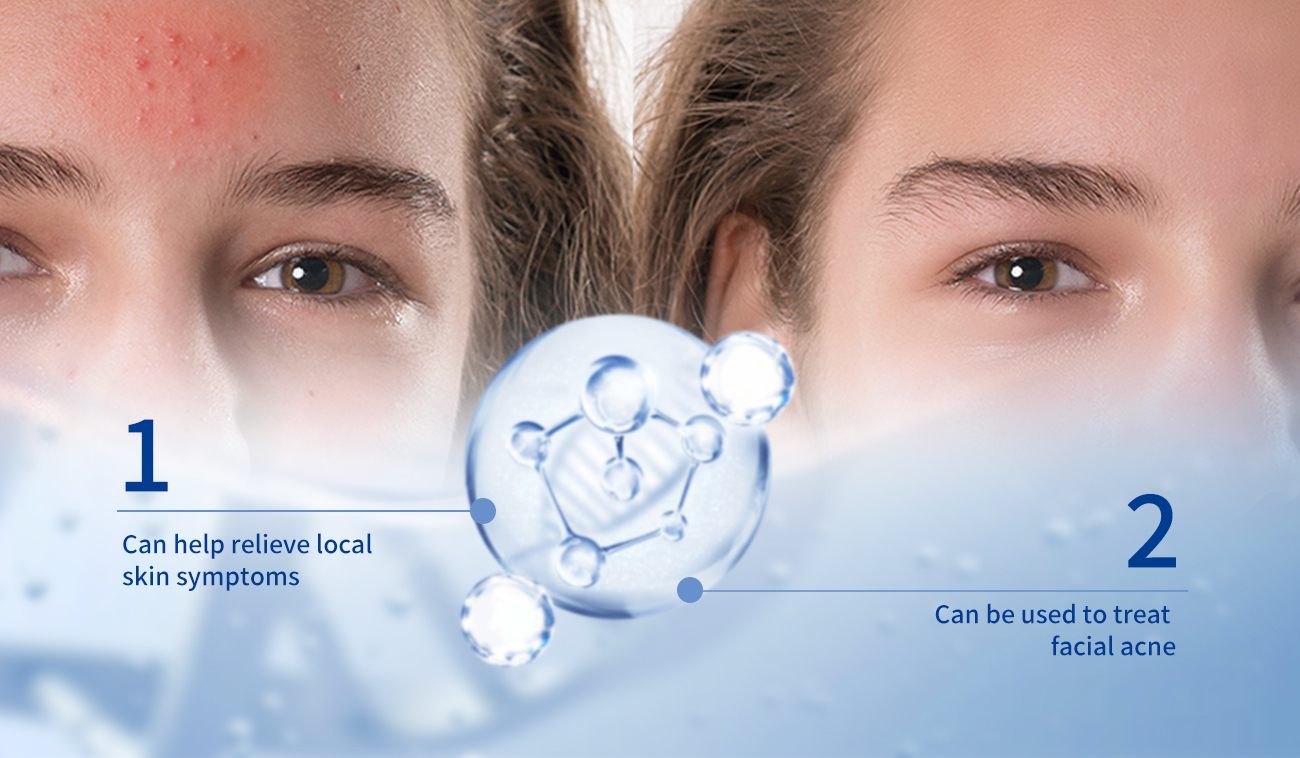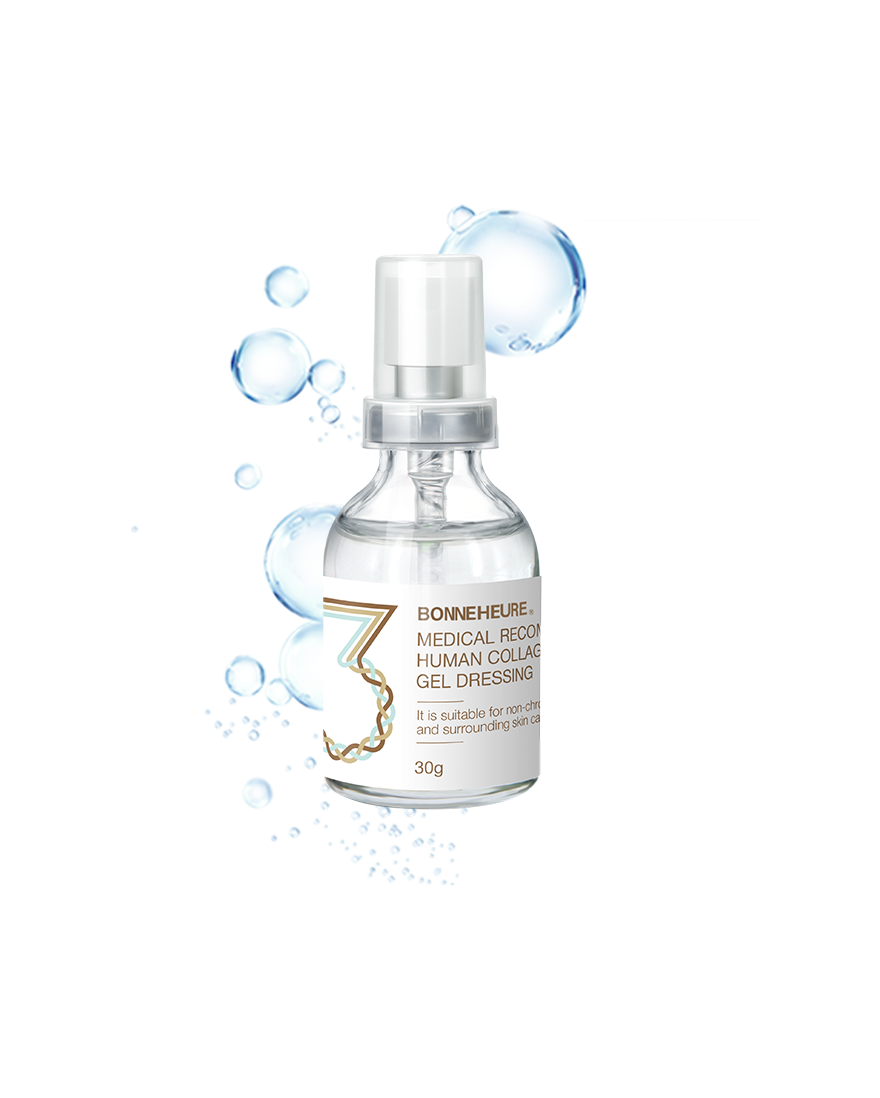
Collagen Revealed! Read the difference between Type I, II and III in one article!
To understand recombinant collagen, first of all, we need to understand what collagen is?
Collagen is the most abundant and widely distributed protein in the human body. It functions like the frame of a house, anchoring cells to each other (like cement and glue) to form strong fibril chains. It serves as a supporting structure for skin, bones, connective tissue, etc. and has multiple functions such as repair and regeneration, anti-oxidation, and whitening.
Collagen accounts for about 25% to 35% of the body’s protein and 70% to 80% of the skin’s dry weight. It is one of the main components of the skin, the guardian of the skin, and an important force in the skin’s anti-aging. For example, women usually start to lose collagen from the age of 25, so supplementing collagen from exogenous sources has become a key focus.

There are many types of collagen, but types I, II, and III are more common and more important.
Type I: Skin, tendons, vasculature, organs, bones (main component of the organic part of the skeleton)
Type II: cartilage (the main collagen component of cartilage)
Type III: Reticular (the main component of reticular fibers) usually coexists with type I

Therefore, type I and type III collagen can be widely used in cosmetics.
Type I collagen: constitutes the extracellular matrix network structure, which is used to support the skin’s hardness and make the skin firm.
Almost all medical aesthetic projects are aimed at stimulating the production of type I collagen to revitalize the skin. However, because type I collagen is thick and solid, excessive injection may cause the skin to become stiff, unnatural and inelastic, further aggravating skin problems.
For example: When a damaged wound forms a scar, the scar becomes hard, which means that there is too much type I collagen.

Type III collagen: mainly found in infant skin, vascular endothelium, and intestines. It is small and has good elasticity, and plays an important role in scar healing. Its reduction will lead to skin aging.

The content of type III collagen reaches its peak during infancy, so type III collagen is also called “baby collagen”.
With age, the differentiation ability of bone marrow cells weakens, and the number of cells that synthesize type III collagen decreases. The dermis of adults does not have the ability to synthesize type III collagen. Exogenous direct supplementation is the only way to reshape type III collagen in the body, which can better repair damaged skin and keep the skin elastic and tender.

Why choose collagen type III?
Big picture overview:

Different from the traditional collagen preparation method, recombinant human type III collagen is designed based on the gene sequence of natural type III collagen in the human body and is biosynthesized using genetic engineering DNA recombination technology. It has a stable and clear structure and activity, is 100% homologous to the human body, is safe and has no rejection, has good repair properties, and is more suitable for use!
The pioneer of the new generation of "recombinant human collagen 1068" --- Bernach
The first brand for seamless repair of damaged musclesThe first brand of humanized type III collagen recommended by public hospitalsA pioneer and a leader In the field of recombinant human collagen, it obviously has its own natural halo. It relies on the large biological factory of Duomekang (currently the first biological enterprise in the country to use 30 tons of raw materials (tanks) fermentation technology for large-molecule long collagen with 1068 amino acids), with multiple blessings such as raw materials, technology, and scientific research team, and has built the core barriers of the product from within.

All products use the patented recombinant human type III collagen 1068plus with high activity, high purity and 100% humanization as the core ingredient to create a collagen nourishing formula, establish dual channels of “direct collagen supplementation” and “collagen active regeneration”, create a collagen active regeneration cycle, and solve the problem of collagen loss at the root.
Large molecules, long collagen
Ultra-long amino acid sequence of 1068 retains nearly 200 complete functional domains of human collagen
Can achieve 100% coverage of human collagen amino acid sequence
Good repeatability, hundreds of times larger than the splicing of collagen short peptides on the market
The longest peptide chain can repair damaged muscles without error
130,000 Daltons ultra-large molecule, the highest molecular weight, unique and original
High activity, strong stability
Better support for the skin, plugging the “big hole” in the skin barrier
Forming better physical protection

It can adhere to exposed skin wounds, provide effective protection for the wounds, and block the interference of the external environment on wound repair.
Moreover, it has excellent instant repair and long-term moisturizing effects, and can effectively complete the vertical three-dimensional repair system of epidermal repair, basement membrane remodeling, and dermis anti-aging, preventing scars and pigmentation. It has strong applicability and is also widely used in wound healing and mucosal care.
It is especially suitable for skin after medical aesthetics, removing spots, seasonal allergies and stubborn acne, etc. It replenishes type III collagen for the skin and further enhances the repair effect.

Choose recombinant human collagen and choose a pure, efficient and safe way to repair your health.
Join Bernach in leveraging the power of technology to embark on a journey of skin renewal and embrace beauty and confidence!
Hydrating Rosewater Toner
Some information about Hydrating Rosewater Toner: Stand […]
Calming acne toner with green tea extract
Some information about Calming acne toner with green te […]
Clarifying acne toner with 2% salicylic acid
Some information about Clarifying acne toner with 2% sa […]



发表回复